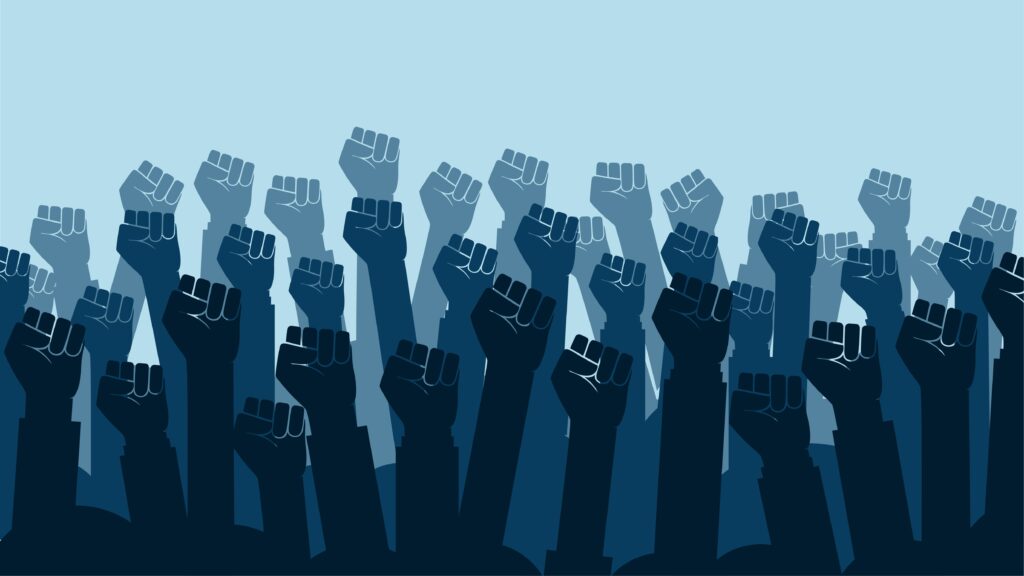Scholar Behind the Term Is Also Credited With Founding CRT
Brendan Clarey | April 22, 2024
(Chalkboard News) — School districts with diversity, equity and inclusion departments and organizations or individuals that offer professional development may use the term “intersectionality” on their websites, but what does it mean and what relationship does it have to critical race theory?
Understanding the principles behind intersectionality and what it means can help add context to important and often divisive conversations at the local, state and national levels around equity and critical race theory. Conversations around power, privilege and racism continue to divide legislatures and school board meetings.
Kimberlé Crenshaw, who coined the terms intersectionality and critical race theory, recently gave the keynote lecture at the American Educational Research Association’s annual meeting last week.
She spoke about “how extremists have weaponized critical race theory (CRT) in their ‘war on woke,’ a dog whistle campaign that has functioned to impair public education, erase history, circumscribe freedom of expression, and roll back the modest gains of the Civil Rights Movement.”
Republican states have used legislation to target what they call “divisive topics” in school classrooms and other settings, arguing that students should not be taught that some students have more privilege or power based on their characteristics like race, gender or class.
Crenshaw, who is employed by the law schools at UCLA and Columbia, is “a founder and has been a leader in the intellectual movement called Critical Race Theory.” Crenshaw edited a book titled “Critical Race Theory” in 1995 and wrote a paper defining intersectionality in 1989 called “Demarginalizing the Intersection of Race and Sex.”
Critical race theory is primarily a legal framework explaining how race and racism play a role in society and its institutions. According to the American Bar Association, its definition is unstable.
“It cannot be confined to a static and narrow definition but is considered to be an evolving and malleable practice,” the ABA wrote about critical race theory in 2021. “It critiques how the social construction of race and institutionalized racism perpetuate a racial caste system that relegates people of color to the bottom tiers.”
In a 2011 paper reflecting on the origin of critical race theory, Crenshaw writes that the gathering of its founders was “underwritten by specific institutional and organizational struggles over how racial power would be articulated in a post-civil rights America.”
Intersectionality, stemming from Crenshaw’s 1989 article in the University of Chicago Legal Forum, is the idea that an individual’s identity can compound in various ways the privilege and oppression they experience in society.
Crenshaw argues that Black women have a different experience than Black men because sexism and racism are oppressing them concurrently.
“Imagine a basement which contains all people who are disadvantaged on the basis of race, sex, class, sexual preference, age and/or physical ability,” Crenshaw writes in that article. “These people are stacked-feet standing on shoulders-with those on the bottom being disadvantaged by the full array of factors, up to the very top, where the heads of all those disadvantaged by a singular factor brush up against the ceiling. Their ceiling is actually the floor above which only those who are not disadvantaged in any way reside.”
Seattle Public Schools teaches students about intersectionality using handouts called identity wheels, which ask students to provide information on their race, privilege, religion, mental health and other characteristics.
The school district has defended its practice of using the handouts as an “appropriate tool to encourage students to reflect on different aspects of their identity” and that “it is consistent with state and district guidelines on how to talk about identity with students.”
The Washington Administrative Code, however, does not permit schools to ask students about religious affiliation without parental consent.
Other school districts, like Northshore School District in Bothell, Washington, and Bethel School District in Eugene, Oregon reference the term intersectionality on their websites.
The Great Lakes Equity Center, a federally-sponsored technical assistance center, offered a presentation on intersectionality in 2015, which asked participants to reflect on their identity’s connection to power and privilege and quoted Crenshaw.
It found that intersectionality “helps us understand that oppressions within society do not act independently of one another. Instead, forms of oppression interrelate, creating a system of oppression that reflects the ‘intersection’ of multiple forms of discrimination.”
